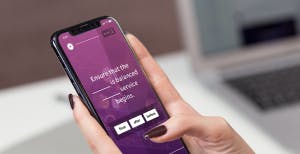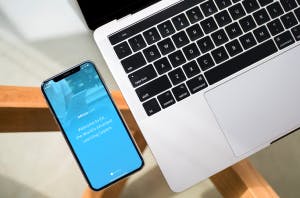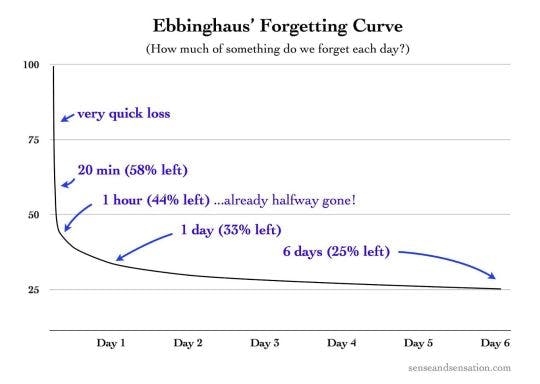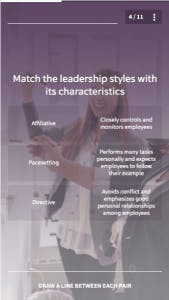Microlearning Evidence

Learning used to be associated with brick and mortar classrooms, with a professor reciting course material and sending students home to memorize additional concepts on their own time. But that age-old understanding of what ‘learning’ is no longer applies.
There are plenty of new buzzwords in eLearning right now. One of those hot new topics is microlearning, a subset of eLearning. As the name implies, microlearning breaks complicated information down into bite-sized chunks. These ‘chunks’ are highly targeted lessons that are easier to digest and therefore, easier to retain and remember later.
The method has skyrocketed in popularity. According to Reportlinker, an award-winning market research solution, in 2019 the global microlearning market was worth 1.5 billion USD. That number is expected to nearly double to 2.7 billion USD by 2024. In the United States, 77 percent of companies have already used online learning to train their workforce. It’s therefore not an unreasonable stretch to think that these companies may be seriously considering adopting microlearning into their corporate training in the near future, which would help cut costs while increasing retention.
The popularity of Microlearning is undisputed. But is it effective? Or just another online learning fad? Let’s find out.

Microlearning Evidence: Engagement rates soar
Before even looking at the evidence for retaining information, let’s look at the engagement factor. Incorporating microlearning into a course can sometimes double or even triple completion rates. That in itself is a huge accomplishment, especially when companies often struggle to motivate their employees to complete training in the first place.
Many corporations are taking advantage of microlearning to train their employees and, in the same sweep, boost revenue. Pandora, for example, had a lot of difficulties trying to find economically viable and efficient ways to train their worldwide workforce and found their run-of-the-mill eLearning module to be too static. The EdApp microlearning module helped make their completion rates soar from 15 percent to nearly 90 percent, while also engaging employees with the content.
People are more likely to retain information that they learned if they are engaged with the content. This can be done by ensuring that the material is relevant to the audience, therefore ensuring they have at least a modicum of interest in wanting to find out more. Microlearning also has the advantage of being supported by a mobile-based platform, which means that information can be displayed in a way that is visually striking and therefore, more memorable.

All of this put together means that Learning and Development professionals cite microlearning as being their favorite training method, specifically because employees ask for it. Longer courses are not only more challenging to digest and retain, but taking them also requires a greater time commitment than some employees are willing to give.
In this regard, Microlearning has proved to be a successful alternative to long-form eLearning courses as it allows participants to digest things quickly, multi-task between meetings and work, and retain the subject at hand better.
Microlearning Evidence: Retention rates are improved
As mentioned, microlearning breaks down complicated information into bite-sized chunks. These ‘chunks’ are highly targeted lessons that are easier to digest and therefore, easier to retain and remember later. It is well-suited for training and other snippets of knowledge, and can even be combined with gamification, spaced repetition, and mobile learning.
Human memory can only hold up to five new pieces of information before it gets lost or overwritten. Microlearning focuses on the key elements of any subject area which makes both educational learning and company training much more effective. By focusing on fewer topics, knowledge has a greater likelihood of transferring from short-term to long-term memory where it is embedded. It has been observed that 85% of all content learned is either forgotten or degraded beyond any use within six weeks, a fact which leaves companies wondering why they should expend their employees valuable time in the pursuit of learning when inevitably, most of it will become redundant.
Microlearning, when paired with other mobile-friendly learning applications, is also effective because it beats the ‘forgetting curve’. This is the notion that memory retention decreases over time, meaning that information gets lost, or ‘forgotten’ when there are no attempts to retain it. A typical “forgetting curve” hypothesizes that participants tend to forget more than 50% of their newly learned material 20 minutes immediately after the lesson ends, and keeps increasing until only a quarter can be recalled after a month if no revision or repeat learning takes place.
Source: Wikipedia Commons

The solution? Keep reintroducing the lessons in small increments, and repeat them over and over. This commits the knowledge to long-term memory instead of short-term memory, where it is more likely to be lost. And with the introduction of smartphones and other personal mobile devices, everyone has access to their courses right in their pocket.
Repetition, repetition, repetition
The theory behind the success of microlearning rests on the notion that short, repetitive learning increases long-term comprehension rates. The more we repeat and use information, the more likely it is to end up being stored in long-term memory. That is why microlearning works so well. With the rising availability of mobile devices, everyone now has access to their own teacher, right in their pocket, where they can access training at any time from anywhere, whenever it is convenient for them.
Spaced repetition is a highly effective method of learning. Lessons are retaken at increasing intervals until knowledge is fully embedded in long-term memory. The more frequently a lesson is retaken, the better the knowledge retention is, and the less frequently the repeated learning needs to occur. By combining this practice while using microlearning on mobile applications, the retention level can fend off the forgetting curve and keep information firmly locked into memory for a while.
Are you interested in learning more about mobile learning examples? Visit EdApp today to see how they can help. EdApp’s multi-award-winning mobile app is the new standard in eLearning and offers support for microlearning, mobile learning, spaced repetition, and gamification.

Curious to see what microlearning looks like in action? Take Leadership and Coaching Management Styles course, one of EdApp’s free microlearning courses found in the extensive and completely free content library!
Author
